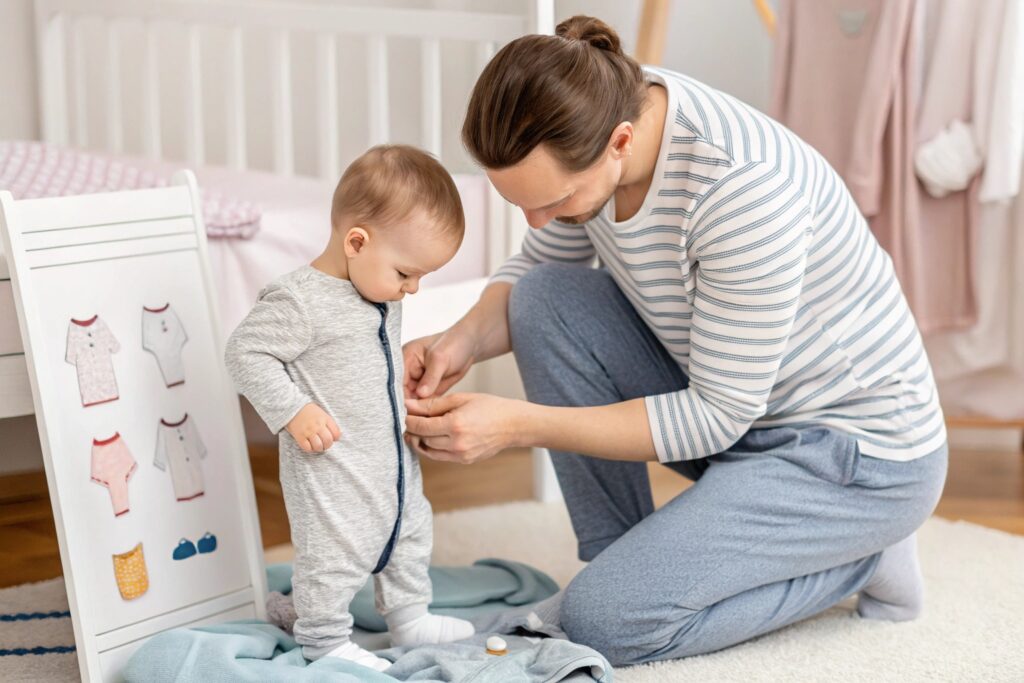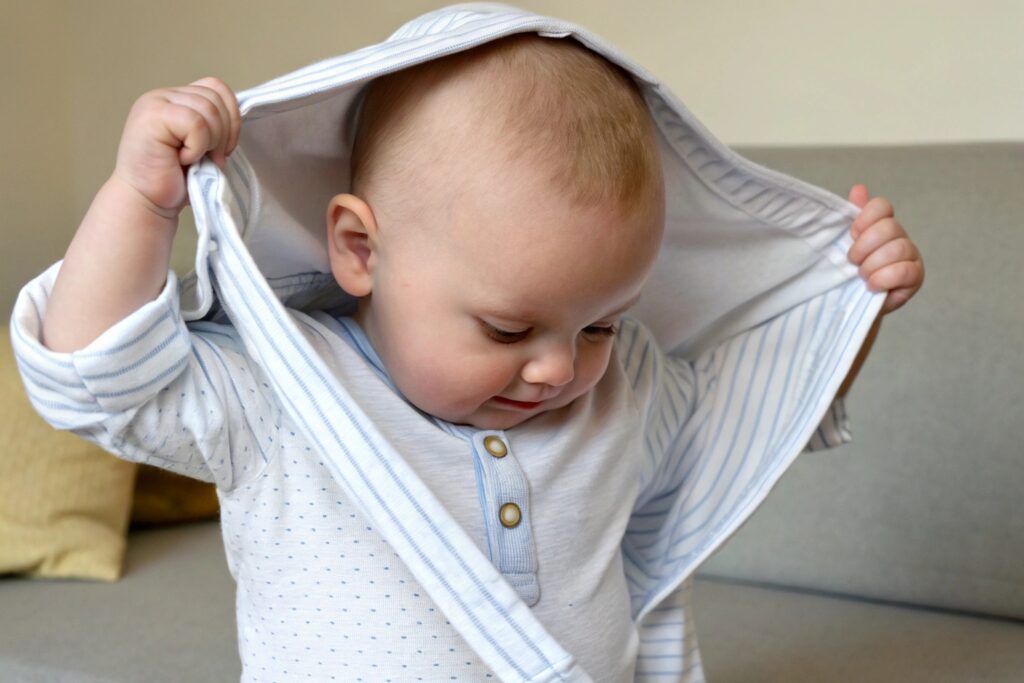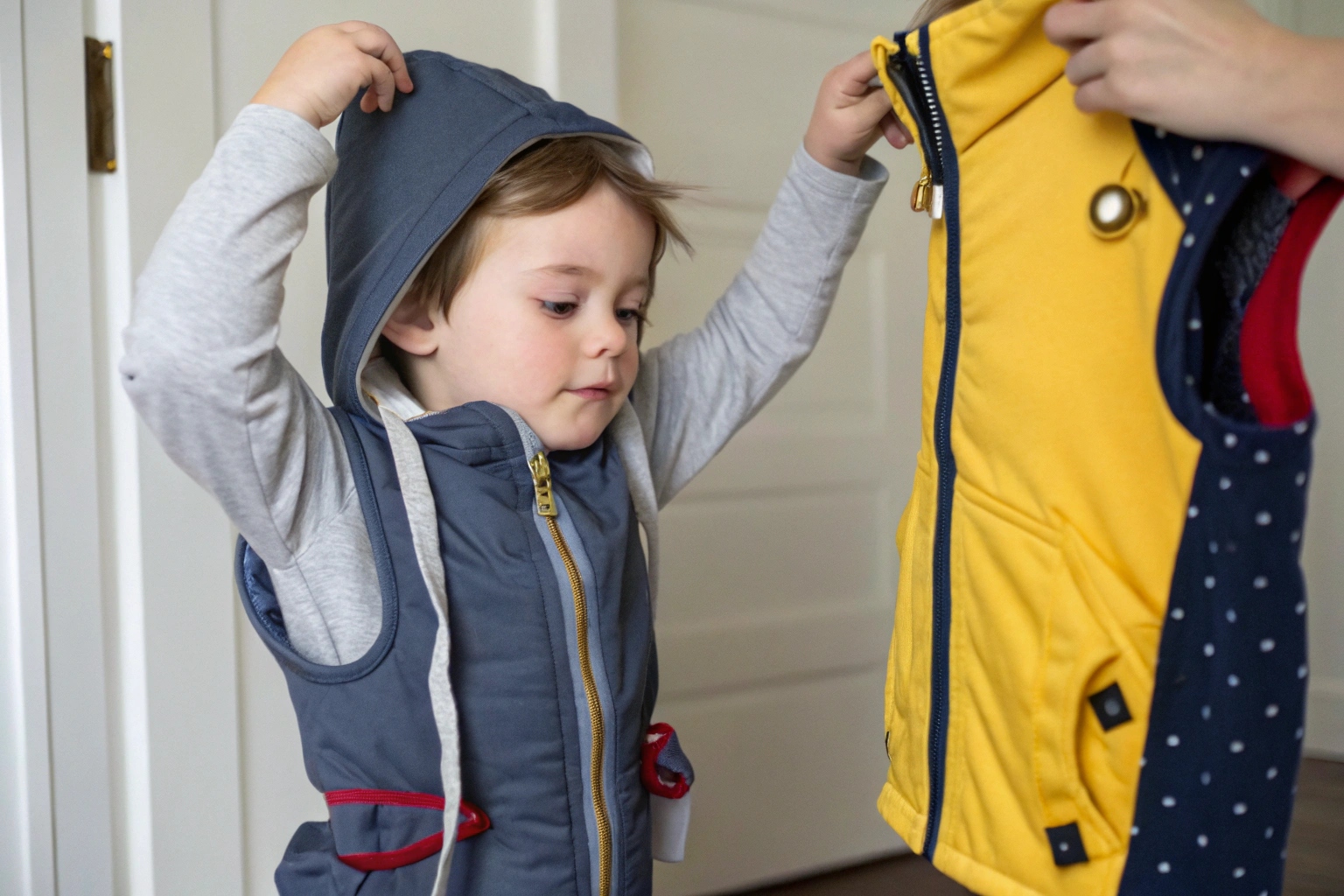Dressing up may seem like a simple task—but for kids, it’s a major milestone that supports confidence, coordination, and independence.
Most children begin dressing themselves between ages 2 and 4, starting with simple tasks like pulling on pants or putting on a shirt. Full independence typically happens around age 5–6, depending on motor skills and clothing design.
In this article, I’ll explain when kids start dressing independently, how to support the process, and what types of clothes make it easier.
When Can Toddlers Start Putting on Clothes?
Toddlers love doing things on their own—but getting dressed takes patience and practice.
Toddlers usually begin attempting to dress themselves between 18 months and 3 years old. Early skills include taking off shoes, pulling off socks, and putting on simple shirts or jackets.

Dressing milestones by age:
| Age Range | Typical Skills Learned |
|---|---|
| 12–18 months | Pull off socks, help with sleeves |
| 18–24 months | Push arms through sleeves, pull pants up |
| 2–3 years | Attempt to wear shirts, unzip jackets |
| 3–4 years | Puts on most clothes with help |
| 4–5 years | Fully dresses with few mistakes |
Tips to support early dressing:
- Give extra time—rushing causes frustration
- Offer easy clothing choices
- Praise efforts, not just results
At Fumao, we design toddlerwear with elastic waists and wide necks to support independent dressing milestones.
How to Teach Kids to Dress Themselves Faster
Learning to dress takes time—but smart habits and the right setup can help kids build confidence and speed.
To teach kids to dress themselves faster, break tasks into steps, use visual cues, keep clothes organized, and practice daily during calm moments—not rushed mornings.

Teaching strategies:
| Method | Why It Helps |
|---|---|
| Step-by-step routine | Breaks down overwhelm |
| Dressing dolls or teddy bears | Builds practice in play form |
| Lay out outfits in order | Adds structure and reduces choices |
| Use picture charts | Great for visual learners |
| Dress together | Kids mimic adult movements |
Pro tip:
Teach kids the “tag in the back” rule early—it helps avoid backward shirts and pants!
And remember: morning is not always the best time. Let them practice in the evening when there’s no pressure.
What Clothing Styles Help with Independent Dressing?
Some clothes are easier than others. Choosing the right styles can speed up dressing skills and reduce meltdowns.
Clothing styles that support independent dressing include elastic waistbands, large head openings, front zippers, Velcro closures, and loose-fitting designs.

Kid-friendly clothing features:
| Feature | Why It Helps Kids Dress Themselves |
|---|---|
| Elastic waistbands | Easy to pull up/down without buttons |
| Wide necklines / stretch rib | Avoids struggle with heads and sleeves |
| Front zippers / snaps | Easier than back closures or small buttons |
| Velcro shoes or sandals | Replace laces during early years |
| Color-coded sides | Helps identify front vs. back |
Styles to avoid (for beginners):
- Tight jeans with stiff zippers
- Small buttons or narrow buttonholes
- Bodysuits with back snaps
- Long belts or tricky laces
Fumao offers baby and toddlerwear with design features that encourage self-dressing—like envelope neck tees and pull-on joggers.
Signs Your Child Is Ready to Dress Without Help?
Wondering if your child is ready to take charge of getting dressed? Watch for these key signs.
A child is ready to dress without help when they show interest, understand clothing parts, can identify front and back, and have basic motor control to handle easy closures and sleeves.

Readiness signs:
| Sign | What It Shows |
|---|---|
| Pulls off socks or pants | Early awareness of clothing movement |
| Tries to copy adults dressing | Interest in independence |
| Understands left/right arm | Can navigate sleeves and legs |
| Picks out outfits themselves | Engaging in routine and choices |
| Handles zippers or Velcro | Strength + coordination increasing |
Encouraging next steps:
- Offer two outfit options daily
- Let them dress dolls or stuffed toys
- Give them small wins—like putting on socks or T-shirts first
It’s okay if clothes are backward or mismatched—confidence is more important than perfection.
Conclusion
Kids start dressing themselves earlier than you think—but it takes time, practice, and the right clothing design to support their independence. By age 4 or 5, most children can dress solo with a bit of guidance. With the right garments and encouragement, dressing becomes a proud milestone for kids—and a time-saver for parents.










